Sagan af einkavæðingu Búnaðarbankans.
Ártal:
Bls:
DOI:
Efnisorð:
Hinn 16. janúar 2003 seldi íslenska ríkið 45,8 prósenta hlut sinn í Búnaðarbanka Íslands til svokallaðs S-hóps. Hér er ætlunin að segja frá einkavæðingu bankans, frá því að auglýst var eftir áhugasömum kaupendum að bönkunum sumarið 2002 til þess er Búnaðarbankinn og Kaupþing sameinuðust í maímánuði 2003.
Ráðagerðir stjórnvalda um sölu á kjölfestuhlutum ríkisins í Landsbanka og Búnaðarbanka voru upphaflega á þann veg að fyrst yrði seldur hlutur í öðrum bankanum og því næst hinum, nokkrum árum síðar. Með því móti mætti læra af mistökum sem kynnu að vera gerð við fyrri einkavæðinguna og hugsanlega fá hærra verð fyrir bankana. Þegar loks kom að því að kaupendur fundust að kjölfestuhlut í Landsbanka Íslands var horfið frá þessari stefnumörkun. Annar stjórnarflokkurinn gerði það að skilyrði að báðir bankar skyldu auglýstir til sölu samtímis. Aftur á móti voru allt önnur viðmið látin gilda um einkavæðingu Búnaðarbankans en einkavæðingu Landsbankans. Fyrirtæki með skýr tengsl við Framsóknarflokkinn keyptu kjölfestuhlut í Búnaðarbankanum og fengu til þess lán frá hinum ríkisbankanum, enda höfðu þau ekki fjárhagslega burði til kaupanna. Kaupendur að hlut ríkisins í Landsbankanum réðu yfir erlendu fjármagni og greiddu kaupverðið að mestu leyti með erlendum gjaldeyri.
Í fyrsta bindi skýrslu rannsóknarnefndar Alþingis vegna efnahagshrunsins er allnokkuð fjallað um einkavæðingu ríkisbankanna, en þar fær umfjöllun um einkavæðingu Landsbankans mun meira rými en einkavæðing Búnaðarbankans. Undirritaður kaus því að gera einkavæðingu Búnaðarbankans sérstök skil í sagnfræðirannsókn og þá sér í lagi með hliðsjón af þeim reginmun sem var á framkvæmd einkavæðingar hvors banka um sig. Í aðdraganda einkavæðingar Búnaðarbankans og í kjölfar hennar tók að bera á ýmsu sem gaf tóninn fyrir næstu ár, sem einkenndust af fullkominni yfirkeyrslu efnahagslífsins.
THE PRIVATISATION OF BÚNAÐARBANKI BANK
At the beginning of this century, the governing Independence Party and Progressive Party coalition changed course. The government abandoned its original plan for distributing the ownership of the state-owned financial institutions during their privatisation, deciding instead to sell controlling stakes to core investors. Although both parties bore political responsibility for the sale of these banks, Progressive Party ministers were definitely in the driver’s seat as concerned privatising the Búnaðarbanki. Extremely adamant, they actually threatened to break up the coalition in order to ensure bank control by the so-called S- group, a consortium with strong connections to the Progressive Party. This control was partly to be realised through a major Icelandic insurance company, Vátryggingarfélag Íslands (VÍS), since the half stake which the state-owned bank Landsbanki had in VÍS was being sold to the S-group. A holding company owned by relatives of Halldór Ásgrímsson, chairman of the Progressive Party, thereby managed to become the largest shareholder in VÍS, and a close ally of Ásgrímsson, the former Progressive Party vice-chairman and current Commerce Minister and Central Bank Governor Finnur Ingólfsson, was made the CEO of VÍS. The power acquired over VÍS by the S-group was a precondition of the group’s purchasing a majority stake in the Búnaðarbanki.
The participation of a respected foreign investment firm had been one of the three main reasons for considering the S-group best qualified to buy Búnaðarbanki, and S-group representatives repeatedly mentioned plans of the international bank Société Générale being involved in this investment. However, when the time came to sign a deal, the foreign entity in the purchase proved to be a small private German bank, Hauck & Aufhäuser. There is little evidence that this bank genuinely owned the Búnaðarbanki stock; rather, the German bank seems merely to have served as trustee, probably for an Icelandic party. Within a short time, Hauck & Aufhäuser received an exemption from the sales agreement, enabling it to sell its shares to cronies of Ólafur Ólafsson, principal leader of the S-group.
The state-owned Landsbanki bank loaned the S-group ISK 7 billion to buy shares in Búnaðarbanki, at that time an almost unprecedented sum in Icelandic business; moreover, information about this loan was kept secret from the public. In the process, many norms set by the government were violated outright. For instance, the S-group did not import any foreign capital into the country, even though that was purported to be a leading reason for choosing the S-group over Kaldbak, which had also sought to purchase the state shares in Búnaðarbanki. Whereas Íslandsbanki bank had been excluded from the purchase from the start, on grounds that its having an interest would conflict with the aim of fostering competition, Búnaðarbanki and Kaupþing bank were permitted to merge just a few months after privatisation. Indeed, representatives of the S-group and Kaupþing had agreed to such a merger long before.
The Búnaðarbanki privatisation marked the beginning of a sharp division of the Icelandic financial sector into three main blocs. In fact, the governing politicians were dictating the creation of two fairly balanced blocs centred on the Búnaðarbanki on the one hand and the Landsbanki on the other, it being considered inevitable that an additional bloc would eventually coalesce around the third bank, the Íslandsbanki.
Upon the privatisation of Búnaðarbanki, its buyers, who derived from the century-old Federation of Icelandic Cooperatives, joined with the leaders of the young investment bank Kaupþing to form the country’s largest financial company. The S-group purchase of Búnaðarbanki set the stage for the economic excesses of the following years, when the Icelandic financial system would throw moderation to the winds and liabilities would become unmanageable. As the tidal wave of the international financial crisis struck Icelandic shores in the autumn of 2008, the newly born S-group/Kaupþing financial colossus would collapse into bits.

